Related Research Articles
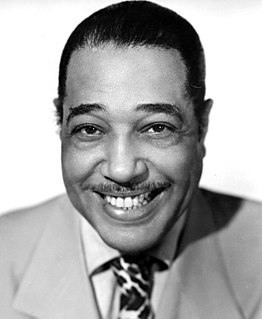
Edward Kennedy "Duke" Ellington was an American composer, pianist, and leader of a jazz orchestra from 1923 through the rest of his life.
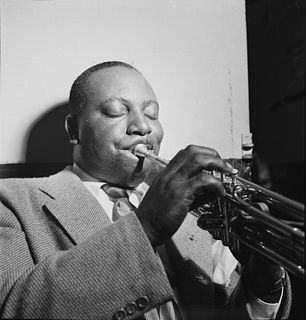
Charles Melvin "Cootie" Williams was an American jazz, jump blues, and rhythm and blues trumpeter.
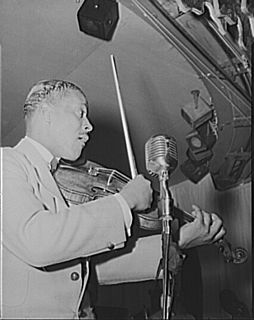
Ray Willis Nance was an American jazz trumpeter, violinist and singer. He is best remembered for his long association with Duke Ellington and his orchestra.

Fine and Mellow is an album by Ella Fitzgerald, released in 1979. The album won the Grammy Award for Best Jazz Vocal Album in 1980.

...And His Mother Called Him Bill is a studio album by Duke Ellington recorded in the wake of the 1967 death of his long-time collaborator, Billy Strayhorn. It won the Grammy Award for Best Large Jazz Ensemble Album in 1968.

The Blanton–Webster Band is a compilation album that combines the master takes of all the recordings by Duke Ellington's Orchestra during the years of 1940 to 1942, involving bassist Jimmy Blanton and tenor saxophonist Ben Webster. The recordings were originally made for RCA Victor during what many critics regard as the Ellington orchestra's golden period. The three CDs contain many numbers which were to become classics, and the arrangements were frequently inventive and innovative.

Mercer Kennedy Ellington was an American musician, composer, and arranger. His father was Duke Ellington, whose band Mercer led for 20 years after his father's death.
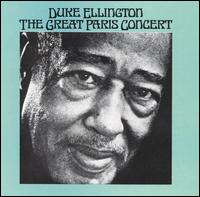
The Great Paris Concert is a 1973 live double album by jazz pianist Duke Ellington preserving pieces of a series of performances given in Paris during February 1963, a decade prior the release. Several of the tracks were previously edited and included in Duke Ellington's Greatest Hits. Those edited tracks were included on the 1989 CD re-release of The Great Paris Concert.

Never No Lament: The Blanton-Webster Band is a 2003 three-disc compilation combining the master takes of all the recordings by Duke Ellington's Orchestra during the years of 1940 to 1942 with an additional nine tracks, including five alternative takes and four additional masters. An expanded version of The Blanton–Webster Band, this reissue, according to Allmusic, "truly worth either an initial investment or reinvestment". All About Jazz: New York observed that these performances, from what is often considered "the band in its prime", "not only set the standard for big bands and jazz orchestras, but created an ideal near insurmountable to improve upon". The Penguin Guide to Jazz selected this compilation as part of its suggested "Core Collection."
Herbie Jones was an American jazz trumpeter and arranger.
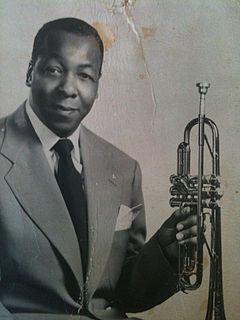
Nelson "Cadillac" Williams was an American jazz trumpeter.
Sacred Concert by Duke Ellington is one of the following realisations:
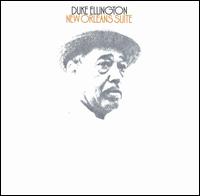
New Orleans Suite is a studio album by the American pianist, composer, and bandleader Duke Ellington, recorded and released on the Atlantic label in 1970. The album contains the final recordings of longtime Ellington saxophonist Johnny Hodges, who died between the album's two recording sessions. The album won a Grammy Award in 1971 for Best Jazz Performance by a Big Band.

Ellington Uptown is an album by American pianist, composer and bandleader Duke Ellington recorded for the Columbia label in 1951 & 1952. The album was re-released on CD in 2004 with additional tracks recorded in 1947 and originally released as the Liberian Suite EP.

The Carnegie Hall Concerts: December 1947 is a live album by American pianist, composer and bandleader Duke Ellington recorded at Carnegie Hall, in New York City in 1947 and released on the Prestige label in 1977.

Duke Ellington at Fargo, 1940 Live is a live album by the Duke Ellington Orchestra that won the Grammy Award for Best Large Jazz Ensemble Album in 1980. The album was recorded at a dance in Fargo, North Dakota.

"East St Louis Toodle-Oo" is a composition written by Duke Ellington and Bubber Miley and recorded several times by Ellington for various labels from 1926–1930 under various titles. This song was the first charting single for Duke Ellington in 1927 and was one of the main examples of his early "jungle music". This composition was covered by Steely Dan on their 1974 album Pretzel Logic.
Harlem is a symphonic jazz composition by the American composer Duke Ellington.
"Echoes of Harlem", also known as "Cootie's Concerto", is a 1936 composition by Duke Ellington. A piece with a jazz blues sound in F minor with an ostinato piano pattern, it has been cited as one of Ellington's "mood" pieces. It opens with trumpet, playing blues sounds in F minor over the ostinato pattern, followed by a segment of 14 bars with some harmony. The third part, played in velvet sound, by the saxophone section, is in Ab majeur, but starts with Db, the subdominant of Ab. The piece contains thus 3 segments. The original recording features Cootie Williams on trumpet, playing in what Lawrence McClellan describes as "muted" and "in a somber minor key". It has been performed by Roy Eldridge, with Oscar Peterson and Herb Ellis.

Black, Brown, and Beige, subtitled A Duke Ellington Tone Parallel to the American Negro, is a live album of phonograph records by Duke Ellington featuring the suite of the same name in live performance in 1943. Released under the Victor Showpiece designation, the album was the first release of the suite, which has primarily been perceived in retrospect as a botched attempt by Ellington to capture his feelings on race in the United States through music. Consequently, it has been studied as an interesting work highlighting Ellington's complex relationship with race relations.
References
- ↑ Dryden, Ken. "Duke Ellington - Harlem Air Shaft". Allmusic. Retrieved 16 November 2018.
- ↑ Scott, William; Rutkoff, Peter (August 24, 2001). New York Modern: The Arts and the City. JHU Press. p. 161. ISBN 9780801867934.
- ↑ Wendell Bennet, Bryan (Fall 2009). "Cootie Williams, Rex Stewart, and Ray Nance: Duke Ellington 's trumpet soloists 1940-1942". University of Iowa Theses and Dissertations: 36. Retrieved 10 December 2018.
- ↑ Green, Edward (Spring 2011). ""Harlem Air Shaft": A True Programmatic Composition?". Journal of Jazz Studies. 7 (1): 28. doi:10.14713/jjs.v7i1.9 . Retrieved 16 November 2018.